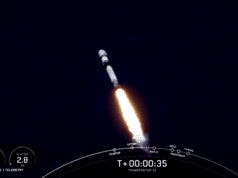 Kuala Lumpur, Malaysia: The Asia Pacific Earth observation (EO) market earned over USD 70.1 million revenue in 2010 and will reach USD 220.5 million in 2018, according to a new market research report, Asia Pacific Satellite-based Earth Observation Market, by Frost & Sullivan, a business research & consulting firm.
Kuala Lumpur, Malaysia: The Asia Pacific Earth observation (EO) market earned over USD 70.1 million revenue in 2010 and will reach USD 220.5 million in 2018, according to a new market research report, Asia Pacific Satellite-based Earth Observation Market, by Frost & Sullivan, a business research & consulting firm.
The report stressed that the Asia Pacific remote sensing market is poised for a growth upswing in the future with the expanding participant base, growing technological capabilities and an improved political environment. Earth observation satellite capabilities have advanced in leaps and bounds in recent years. The enormous quantity of high-resolution, multi-spectral, and hyper-spectral data available in a short span of time has improved decision-making processes for several commercial and government users. Policy makers in this region are ramping up government spending for space and satellite imagery endeavors.
“Remote sensing satellites, ground segment and value-added services have become an integral part of the well-established GIS industry,” said Frost & Sullivan Senior Consultant Kunal Sinha. “The seamless integration of satellite imagery with the navigation and other telecommunication technology will dramatically change the scope and application base of this market.”
In a vast majority of Asia Pacific countries, the commercial remote sensing segment has scaled new heights in the last few decades, with the launch of hundreds of satellites. Commercial data revenues are estimated to register more than threefold increase by 2018.
“However, North America and Europe are the frontrunners in this arena and pose stiff competition for participants in the Asia Pacific region,” added Sinha. “Leading space agencies and commercial remote sensing companies such as Digital Globe and Spot Image are a threat to the nascent EO market in the Asia Pacific.”
In addition, the report observed that many countries are entering into agreements with commercial companies for their specific imagery requirements. This has proved useful in terms of cost effectiveness as the launch and operation of satellites would be an expensive proposition. The biggest challenge confronting EO market participants is the concurrent change from satellite imagery providers to service providers with the increasing integration of the value chain.
The future lies in the value-added services sector, where competition is intense. Some participants in the higher value chain are opting for vertical integration by acquiring companies in the lower rungs.
By 2018, satellite imagery is expected to become a commodity. The process to extract useful information from satellite imagery will matter. For the participants in the commercial remote sensing industry, the focus will be directed toward charting a growth path for the concurrent change from satellite imagery providers to service providers.
Source: Frost & Sullivan




